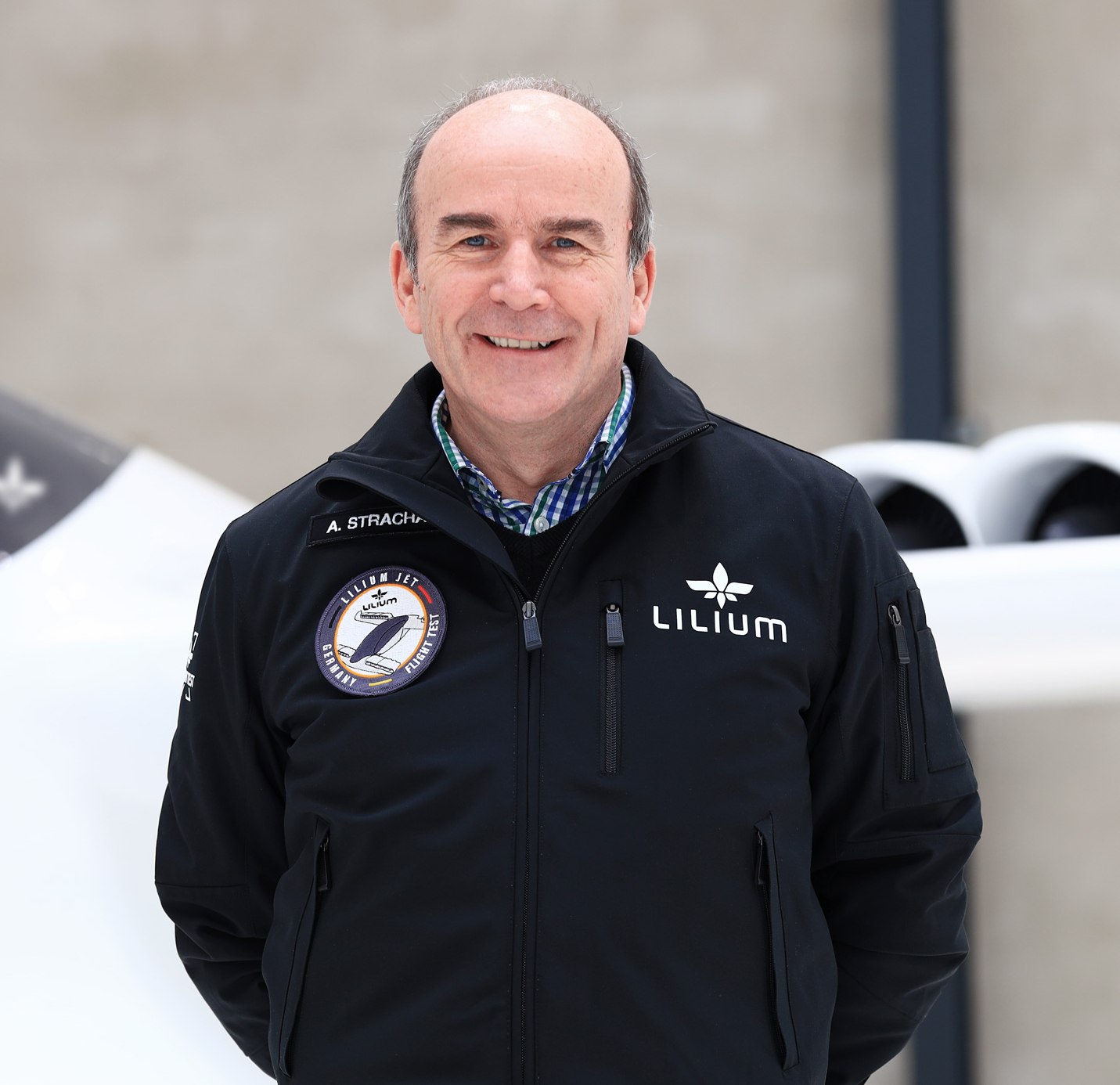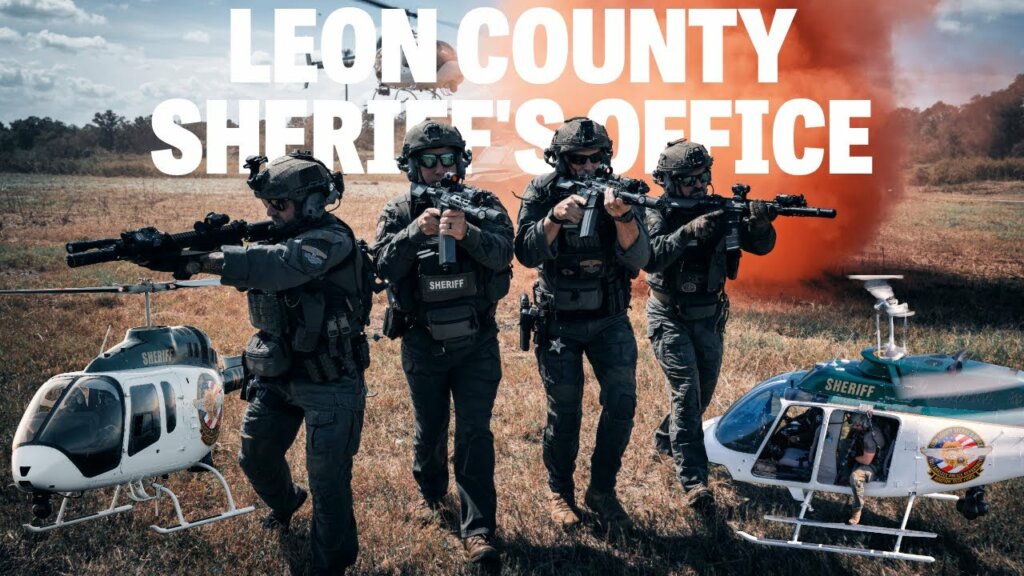Lilium has recently moved its flight test activities to the ATLAS (Air Traffic Laboratory for Advanced unmanned Systems) Test Flight Center, located in the sprawling Andalusian olive groves in southern Spain. We took this opportunity to speak to Andrew Strachan, Lilium’s chief test pilot, to learn about how the company is progressing through its flight testing.

Alex Scerri: Andrew, can you give us a background on your experience and the path that brought you to Lilium?
Andrew Strachan: I joined the Royal Air Force (RAF) as a direct entrant in 1979, with most of my experience being on rotary-wing aircraft. In 1990, I did the Empire Test Pilots’ School (ETPS) test pilot course following which I did four years of military test flying, equally split between Boscombe Down in the U.K., and a two-year exchange with the U.S. army flight test unit at Edwards Air Force Base in the Mojave Desert.
On returning to the U.K. in 1997, I joined Westland Helicopters, which became Augusta-Westland, then Leonardo. I was promoted to deputy chief test pilot in 2003, and chief test pilot in 2012, holding that position for seven years. This work included the full gamut of flight testing, from initial airworthiness to military specific testing such as ship/aircraft interface and weapons testing.
I retired from that position in 2019 but continued some consulting work for Leonardo and Boeing, specifically maintenance check flights on the CH-47 Chinook with the latter. As with anyone interested in aviation, I had an eye on the developments in eVTOL, so when the opportunity came to work with Lilium it was too good to let go.
Alex Scerri: What was the main driver of moving the test campaign to Spain?
Andrew Strachan: It was quite straightforward really. I think as a general statement, it is more difficult to do unmanned test flying as opposed to having a pilot on board in terms of regulation when you consider the size of the flight test area that must consider an unlikely uncommanded flyaway event.
Quite simply, we reached the limit of the flight envelope that we could test at our location in Germany. We looked at several sites, both in Germany and elsewhere, and due to the large area needed, ATLAS was perfect, being in a sparsely populated area. The Spanish authorities have also invested heavily in the infrastructure, so this, coupled with good weather and the available area, ticked all the boxes for us.
Alex Scerri: Will you continue flight testing in Germany concurrently?
Andrew Strachan: There is no flight testing being done in Germany. Phoenix 2 is already at ATLAS and Phoenix 3 will join shortly. That will give us two aircraft to help us accelerate, as well as provide some additional resiliency to the program. The development of the production aircraft will, however, continue at Weßling in Bavaria, Germany.

Alex Scerri: Can you describe the routine of a flight test day at ATLAS?
Andrew Strachan: It’s a traditional flight test process and we have settled down into a good rhythm. The preparation starts the previous day when we prepare the vehicle and the tests that are planned. We have a simulator for the technology demonstrator on site. This allows the crew (remote pilot) and flight test engineers to design and practice the test profile.
On the day itself, the team meets at around 6:30 a.m., as we tend to fly early in the morning due to ideal flying conditions. Later in the day, you would expect some thermal activity and associated turbulence, so we try to fly between 8:00 and 10:00 a.m. We finish the last preparations on the aircraft and the briefings, and in parallel, there would be other tasks such as charging the batteries, etc. The flight itself follows a predefined set of procedural steps. Once back on the ground, we do the debriefings and collect all the data for analysis and prepare for the next day.
Alex Scerri: Do you envision any flight testing with a pilot on board with the current demonstrator?
Andrew Strachan: The Phoenix 2 was always intended to be an unmanned technology demonstrator and is currently fully fitted with test instrumentation.
Alex Scerri: What are the advantages and challenges when most of the flight testing can be done without a pilot on board?
Andrew Strachan: The main advantage is, of course, safety. In modern flight testing, risk is reduced to a minimum. However, as can be expected especially at this early stage of development, there is always a possibility, as small as it may be, that a test flight does not go according to plan. With today’s technology, such as high bandwidth datalinks, we can collect a huge amount of data without having a pilot on board.
We discussed one disadvantage previously, with the need for a larger test area when compared to a manned aircraft. The other thing is that although our vehicle is full of sensors, a test pilot could pick up other cues with the array of human senses. This could range from slight vibrations to odors, etc. In our case, this will be taken care of later once we test fly the production aircraft with a pilot on board. In fact, at that stage, having a pilot on board will be indispensable as we will also be testing the human machine interface (HMI).
Alex Scerri: How much of the testing that you’re doing now can be credited toward certification of your production aircraft?
Andrew Strachan: The technology demonstrator is primarily proving the concept. It is also providing all sorts of data and information that we will apply to the production aircraft. When certifying an aircraft, the vehicle must conform to the production design. The testing we are doing now will give us the assurance and confidence that the assumptions that are being made for the larger production aircraft are valid.
Alex Scerri: Can you give us an outline of your test campaign and timeline with the current vehicle?
Andrew Strachan: We had to rearrange our timelines, not least because we have been affected by the supply chain disruptions that all industries have been experiencing in the past months. We will continue flying the demonstrators as long as we feel necessary and that is going very well. The production specification aircraft will start being built in 2023, and then once we start flying that, also thanks to the experiences we will have accumulated with the demonstrators, the test flight program should last about 18 months.
Alex Scerri: What are the challenges of certifying an aircraft while the certification specifications themselves are also in the process of being developed?
Andrew Strachan: ‘Challenge’ is the good word, but it is certainly something we can handle. It is also not unexpected with a new technology such as this, and we see it as an opportunity. Since we are so involved at this early stage, and with our participation in the associated EUROCAE working group WG-112, we can give our contribution to be part of the formulation of these regulations.
Alex Scerri: With the European Union Aviation Safety Agency (EASA), we have SC-VTOL and the associated MoCs which are providing the backbone of what is expected to become a certification specification in the future. Do you have similar guidance from the U.S. Federal Aviation Administration (FAA) side, especially after the recent announcements?
Andrew Strachan: We are pursuing a concurrent certification for the Lilium Jet, with EASA and FAA. Our primary certification is EASA and we work through EASA with the FAA to drive that concurrent certification.
Alex Scerri: What would be your advice to any student interested in a career in advanced air mobility, specifically flight test?
Andrew Strachan: It’s a good question. The future of this industry is very credible and anyone with any passion for aviation should be following its evolution. Recently, I was speaking with my wife on the subject, and I found a good way to explain it was to see how quickly commercial aviation evolved in the 1920s and then again with the big step of the jet age in the 1960s.
In a way, we find ourselves at a similar point for eVTOL, so anyone coming into this business now will be part of the revolution. If, as a student, you have any interest in this subject, keep up to date with the latest developments and for sure there will be several pathways into the industry. Specifically for flight test, despite all the modern processes and automation, etc., it is still a very exciting part of the development process.
Alex Scerri: Is there anything else you would like to share with the eVTOL community?
Andrew Strachan: Going back to the analogy of aviation in the 1920s, it would have been easy at that time to discount the whole idea of how ubiquitous commercial aviation would become in our lives. I would encourage everyone to have faith in advanced air mobility, and although a lot of work has been done already, we are at the start of a very interesting journey.









Excellent.
This company will have a great future and world recognition
Great job..
The tufts show massive flow separation indicating that the wing is acting like a huge airbrake ( 90 degree flapped gliders use this to steepen glide path –to vertical in fact at terminal velocity ) –this cannot be efficient and bodes ill for any power failure during hover or transition . Why can you not fly it with the ducts ‘retracted’ using rolling take off and get some real data on cruise performance ? staggering around at very low speed for years doesn’t answer the critics questions on range and power in the cruise configuration which this would. (need bigger wheels though)
Hi Ross, I think that Lilium are still expanding the flight envelope and will eventually be flying the aircraft in its cruise configuration with the ‘jets’ in the fully horizontal position.